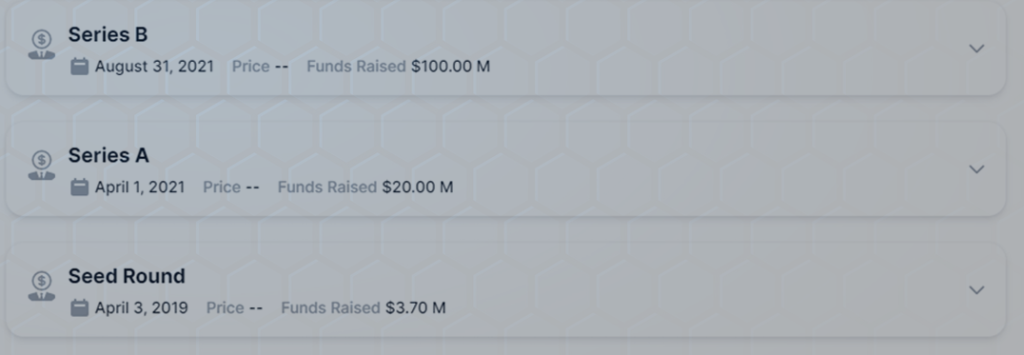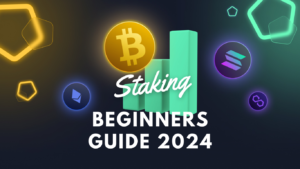Arbitrum Layer 2: Revolutionizing Ethereum’s Scalability

Arbitrum is an Ethereum-based Layer 2 scaling solution. Arbitrum is a technology that enables developers to deploy Ethereum smart contracts and decentralized applications without modifications and with significantly reduced transaction fees on the blockchain.
The American company Offchain Labs, founded in 2018 in New York, developed Arbitrum. The three founders, Ed Felten, Steven Goldfeder, and Harry Kalodner, possess high expertise in cryptography and blockchain.
TOKEN UTILITY AND TOKEN USAGE
To further discuss token use and functionality in the Arbitrum project, it is necessary to mention its technological part. The type of technology used by Arbitrum is called Optimistic Rollup. Overall, Rollup is the main Layer 2 protocol based on Ethereum. It ensures high privacy for each transaction and scales Ethereum by bundling transactions, which Layer 1 then verifies.
OPTIMISTIC ROLLUP
The name ‘optimistic’ stems from assuming any transaction is successful until proven otherwise in ‘eventually consistent’ Distributed Transaction Processing. The system performs arithmetic operations only when related to fraud proofs. This feature minimizes the load on the networks.
As a result, anybody can be a validator, and verify if someone is trying to embezzle funds. Overseers oversee instances of difficulties. Regular users of the network cannot fall prey to any fraud if they are not validators; this would only be possible if all the validators are involved. Layer 2 remains secure as long as there exists at least one honest validator in the network. Furthermore, the network will remain secure even when all validators are malicious as long as they can not forge an agreement.
Whenever the fraudster is caught, the validator forfeits their deposit, and a portion is given to the “detectives” that exposed the fraudster. This system ensures that the participants in the network put on their best behavior, that is, fraud becomes unprofitable.
Arbitrum Virtual Machine
The Arbitrum Virtual Machine (AVM) is a custom-built virtual machine responsible for transferring transactions from Layer 1 to Layer 2 and vice versa. It is fully compatible with the Ethereum Virtual Machine (EVM). ArbOS handles smart contract execution and transaction processing in the L2 network. ArbOS transmits transactions through the AVM to the Rollup protocol’s outbound transaction queue for subsequent block addition.
The output is the following Arbitrum transaction processing chain:

- A user initiates a transaction in Arbitrum. The transaction appears in the “Incoming” folder, where the Sequencer creates a clear sequence of transactions.
- Once a sufficient number of transactions are accumulated, they are compressed into the aforementioned batch and sent to the Ethereum network.
- Alongside, Arbitrum validators receive the data of the ordered transactions.
- After forming the block, the data is transmitted to the Ethereum network, and the transaction is completed. This way, the network can compare the data in the complete block with the data received in the previous “compressed batch.”
Conclusion
Regarding their impact on UX, Optimistic Rollup greatly minimizes the time required to process transactions and the associated fees. In the everyday usage of the Arbitrum network, users send transfers that cost from 90 to 95% less than similar transfers via the Ethereum network while using ETH to pay for the transaction fees in both networks. Also, there is the possibility of continued fee cuts Savings from paper are not nominal as there are potential for further slashes in the fees. This is a significant advantage considering the pragmatic use –value for the project.
ARBITRUM DAO
While launching the tokens, there needed to be the establishment of the Arbitrum Foundation, backed by its DAO as a governing body for the project. Finally, $ARB token users can propose initiatives and vote on them, with the developers’ vision ensuring a decentralized decision-making process. This means that token holders for Arbitrum decision-making processes can contribute towards changes in the code.
Moreover, the Arbitrum team formed a collaboration called the Arbitrum Security Council consisting of 12 respected community members with the roles to monitor the safety of the chain and have the capacity to respond swiftly to security threats. Despite the structure of the SC, the latter can immediately react in an emergency that is why it work with 9 of the 12 members of the SC. To ascertain oversight, the Arbitrum DAO will work as the highest decision-making authority of the Arbitrum Security Council, with bi-annual elections. The DAO also has the right to discharge the Security Council if it feels that it no longer require protection from the said council.
Tokenomics of the Project
To begin with, the total future supply of coins is 10 billion. The token has an inflationary component in its mathematical model, while the actual increase in the token supply can be no more than 2% per year. What does this mean? It means that in one year only 200 million $ARB can be added to the initial 10 billion.
The token distribution is as follows:



Let me give details to this one. Thus, 42. The remaining 7% of the tokens will be distributed to participants of DAOs. Some of these tokens have been issued out to the projects that were assigned portions to work with. It has not yet been clearly revealed on how the remaining tokens for the DAO participants will be distributed. In any case, token distribution will be based on decentralized voting, regardless of the option ultimately selected.
- Furthermore, 26.94% of the coins will be allocated to the project team and advisors. Investors will receive 17.53% of the token issuance.
- According to the token release schedule, investors and the project team will start receiving tokens one year after the Token Generation Event, which took place on March 23, 2023. They will receive tokens monthly from March 23, 2024, over the course of three years.
- Given the previous information that the token supply can increase by 2% per year, it can be assumed that the opportunity for staking $ARB tokens will be provided in the future, allowing investors to earn rewards on their holdings during the release period.

A full 11. Arbitrum network test participant received 62% of the issuance. It exceeds 11% of the tested coins, which is significant. Unfortunately, many testnet participants prefer to sell the tokens as soon as they receive them.
When token sales began, the identification of the token in the exchanges was at $14, but there are two conditions. First, when the price of a token was at the highest level, some members of the network experienced congestion. Second, the order books for buying were renewed, which means that there was no liquidity at the time.
Lastly, what is only 1% is a dessert, while 0. 13% of the total supply, has been reserved for the developers of the core network of Arbitrum.
Investors
As mentioned, Offchain Labs closed only seed funding rounds and received $3 in 2019. 7 million. Pantera Capital led the seed round, having invested in projects like Cosmos (ATOM), Ripple (XRP), and NEAR Protocol. Before launching the alpha version of the Arbitrum network in spring 2021, the startup raised $20 million in a Series A investment round.

Following the Arbitrum complete launch on the mainnet at August 31, 2021, Offchain Labs shared the news that the company has received $100 million to attract Lightspeed Venture Partners for the Series B financing round. Other investors also invested in the network such as Polychain Capital, Ribbit Capital, Redpoint Ventures, Pantera Capital, Mark Cuban, Alameda Research and many others. The influence of Alameda Research is less worrisome because of the FTX and Alameda exchange’s failure, though their contribution is relatively low in scale. After this round, the company attained more than a $1 billion market valuation—$1. 2 billion.

Additionally, it’s important to understand the approximate price at which investors received the $ARB token. To determine this, we need to divide the total capital raised by investors by the number of tokens they will receive:
$123.7 million / 1.753 billion ARB = $0.07 per token.
Currently, investors have approximately 20x returns from the initial price. However, they will not receive their tokens for quite some time.
PROJECT ECOSYSTEM
As of March 26, 2023, over 200 blockchain projects are operating on the Arbitrum platform. These include:
- Top representatives of the decentralized world: ChainLink, Uniswap, Sushiswap, 1inch
- Both algorithmic and reserve stablecoins: USDT, USDC, DAI, TUSD
- NFT marketplaces: Lootex, Stratos
- Web3 wallets: Trust Wallet and MetaMask
- Cross-chain bridges: Multichain, Hop Exchange, Stargate
Since 2022, exchanges such as Binance, Okex, Bybit, Gate.io, KuCoin, and others have announced support for the Arbitrum network and the integration of Ether and stablecoins into it.

We can see that the list of projects collaborating with Arbitrum is quite impressive.
Additionally, the project has its own Whitepaper, which outlines the future directions of the project’s development.
Conclusion
Arbitrum is a fundamental project positioned as a Layer 2 solution for Ethereum. From a technological point of view, it has some worth in it. Vitalik Buterin cites Optimistic Rollup as the future of Ethereum and a key method to improve its efficiency.
Looking at Arbitrum token distribution, it becomes evident that the number of tokens issued goes to the development team and investors. Their use raises concerns on future prices manipulation. However, taking into account that there is a clear positive outlook on the project due to the list of prominent partner projects that are in cooperation with Arbitrum, it can be assumed that the tokens will be spent by the team only for developing the platform further.
Read more about the projects here: CRYPTO INSIGHTS
FAQs about Arbitrum Layer 2
What is Arbitrum Layer 2 technology?
Arbitrum Layer 2 solution is a solution that helps Ethereum increase the speed of transactions and reduce fees on the network while retaining contract security.
How does Optimistic Rollup work?
Optimistic Rollup also follows the principle that every transaction is valid until independently proven otherwise, and groups numerous transactions into batches for better efficiency.
What is the role of the Arbitrum Virtual Machine (AVM)?
This layer is compatible with the Ethereum Virtual Machine (EVM), which is responsible for the transfer of transactions between the two layers.
What are the benefits of using Arbitrum?
Arbitrum improves gas costs and throughput of transactions on Layer 2 and enhances the scalability of dApps built on Ethereum.
How is Arbitrum governed?
Arbitrum’s governance is through its DAO in which token owners can make proposals and even vote on the available ones. Arbitrum’s security governance is managed by the Arbitrum Security Council.
What is the total supply of Arbitrum tokens?
Arbitrum has a total token and circulating supply of 10 billion tokens that have an increased inflation rate of no more than 2% per year.




